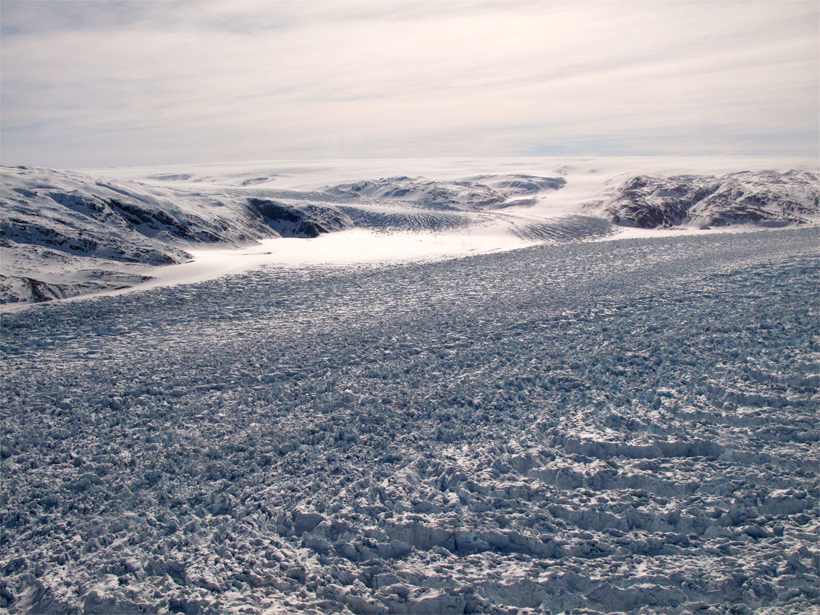Source: Geophysical Research Letters
The Greenland Ice Sheet is the second-largest ice body in the world, behind the Antarctic Ice Sheet. The ice sheet spans 1.7 million square kilometers—an area roughly 3 times the size of Texas—and is more than 3,000 meters thick in some places.
The Greenland Ice Sheet is also melting, which portends rising sea levels worldwide. If the entire ice sheet were to melt, scientists estimate that global sea levels could rise by 7 meters.
The ice sheet’s flow is governed by complex subglacial hydrology, which influences the pace at which the ice moves toward the sea. The influence of particular sources of meltwater on the Greenland Ice Sheet’s hydrology is not fully understood, adding uncertainty to predictions of future sea level rise.
In a new study, Poinar et al. examined how a recently discovered source of meltwater alters the hydrology beneath the Greenland Ice Sheet. The origins of this meltwater are known, but how often it reaches the ocean and whether its journey affects ice flow were not. The authors applied the Glacier Drainage System model to a large tidewater glacier in southeast Greenland to evaluate how subglacial drainage responds to different meltwater input patterns. The research included a series of modeled experiments to test five meltwater scenarios spanning seasonal and multiyear timelines.
The authors found that drainage from firn aquifers—meltwater pockets below the surface of the ice sheet—plays an important role in forming and maintaining subglacial hydrologic systems. Firn aquifers can influence subglacial hydrology up to 40 kilometers inland, with particularly impactful changes in the lower 20 kilometers that affect the speed of the outlet glacier. These changes occur because firn aquifers maintain subglacial channels by supplying meltwater that persists beyond the melt season and across years. As a result, the aquifers may substantially alter the seasonal behavior of glacial hydrology.
These results offer a first look at the subglacial response to meltwater supplied by firn aquifers. The authors hope the findings will motivate new research to constrain the timing and volume of meltwater release from firn aquifers and to incorporate this meltwater into models of glacial hydrology that inform the relationship between climate, ice sheets, and sea level rise. (Geophysical Research Letters, https://doi.org/10.1029/2019GL082786, 2019)
—Aaron Sidder, Freelance Writer
Citation:
Sidder, A. (2019), Modeling the subsurface hydrology of the Greenland Ice Sheet, Eos, 100, https://doi.org/10.1029/2019EO125691. Published on 07 June 2019.
Text © 2019. The authors. CC BY-NC-ND 3.0
Except where otherwise noted, images are subject to copyright. Any reuse without express permission from the copyright owner is prohibited.

